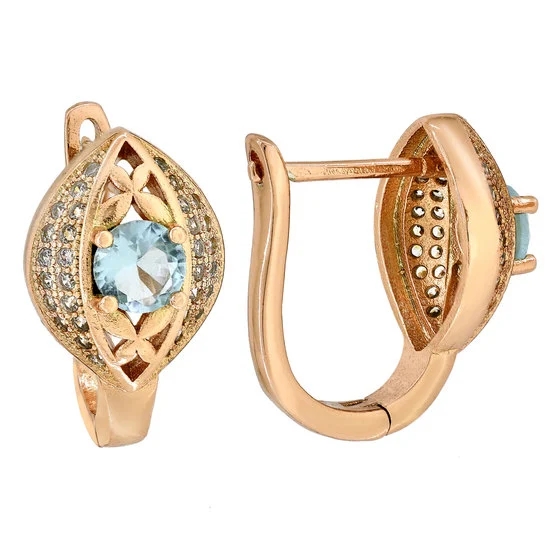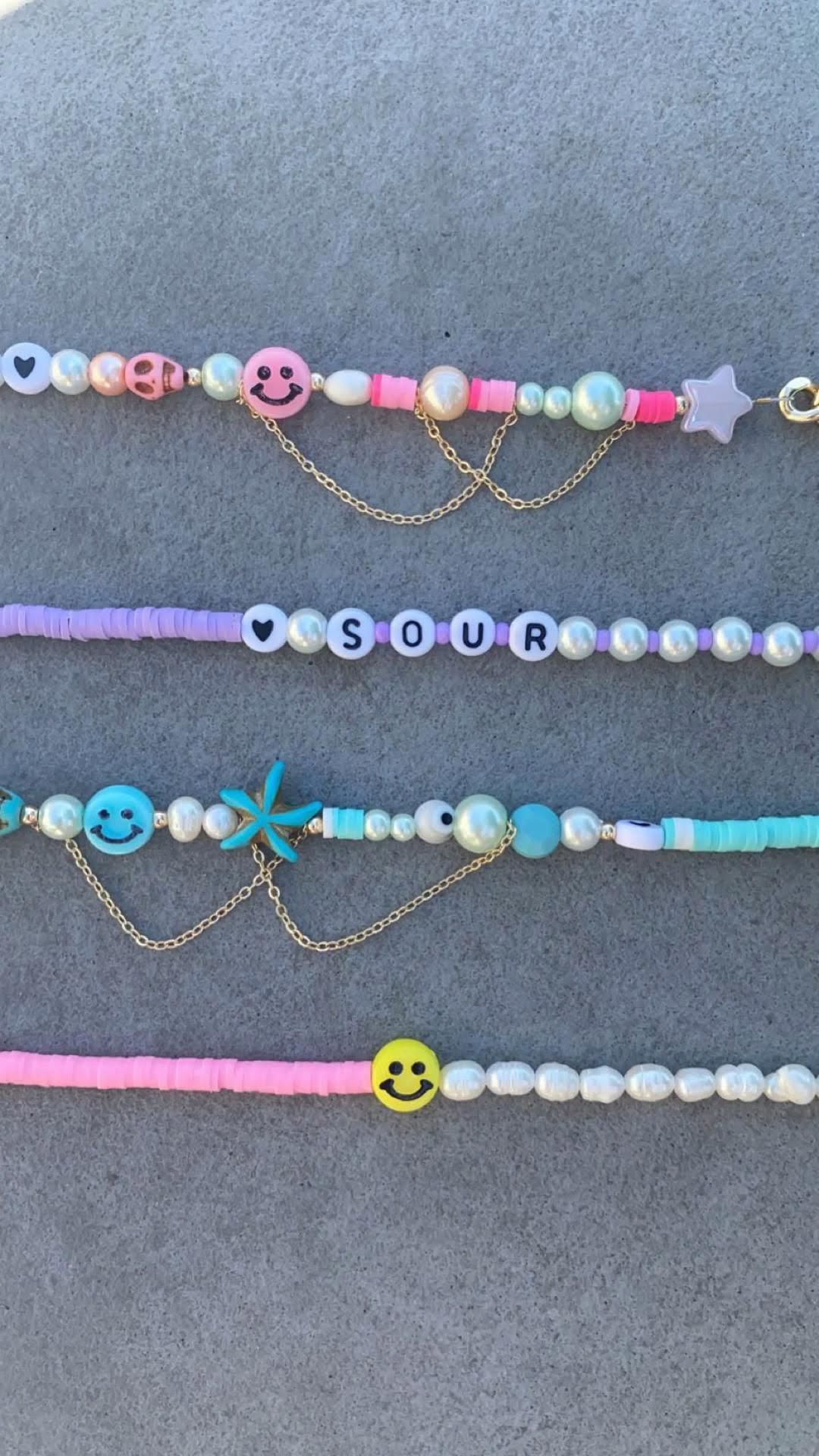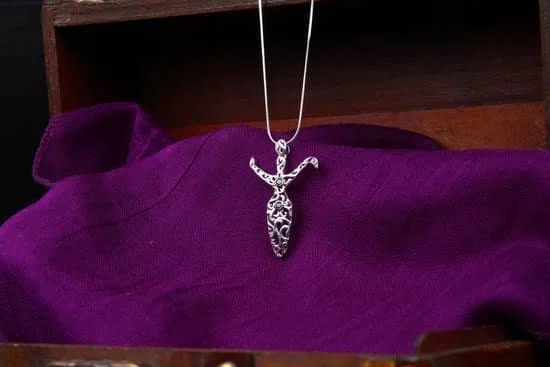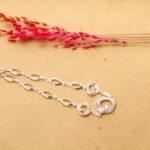Are you interested in learning how to make gold jewelry? Whether you want to start a new hobby or even turn it into a business, creating beautiful gold jewelry can be a rewarding and satisfying craft. In this article, we will explore the art and craft of making gold jewelry, from its historical significance to the step-by-step process of creating your own unique pieces.
Gold jewelry making has been a cherished art form for centuries, with rich historical roots dating back to ancient civilizations. The tradition of crafting intricate gold jewelry has captivated artisans and enthusiasts alike, standing as a symbol of elegance, wealth, and craftsmanship. From traditional techniques to modern innovations, the history of gold jewelry making is as diverse as the designs themselves.
In this comprehensive guide, we will delve into the tools and materials needed for making gold jewelry, various techniques for creating stunning pieces, safety precautions for working with gold, tips for designing your own unique creations, sourcing quality materials, and even how you can turn your passion into a profitable business. Whether you’re an aspiring jeweler or simply eager to learn more about this timeless craft, let’s explore the artistry behind making gold jewelry.
History of Gold Jewelry Making
Gold has been used for making jewelry for thousands of years, dating back to ancient civilizations such as the Egyptians, Greeks, and Romans. These early goldsmiths used primitive tools and techniques to create intricate pieces of jewelry that were often adorned with precious gemstones. The history of gold jewelry making is a rich and storied one, reflecting the cultural significance and value placed on this precious metal throughout history.
Tools and materials used in ancient gold jewelry making included hammers, anvils, molds, and simple hand tools. Goldsmiths would often work with gold nuggets or raw gold ore, melting it down to create the base for their designs. They would then use various techniques such as casting, soldering, and filigree work to shape the gold into stunning pieces of jewelry.
Ancient civilizations across the globe developed their own unique styles and techniques for creating gold jewelry, each with its own cultural significance and symbolism. From the intricate filigree work of the Etruscans to the bold designs of the Aztecs, the history of gold jewelry making is a testament to human creativity and craftsmanship. Even today, modern jewelers continue to draw inspiration from these ancient techniques in creating contemporary gold jewelry pieces.
- In ancient civilizations:
- The tools and materials used
- Unique styles and techniques
Tools and Materials Needed for Making Gold Jewelry
Making gold jewelry is a craft that requires not only skill and creativity, but also the right tools and materials. To create stunning pieces of gold jewelry, artisans need to have a thorough understanding of the necessary equipment and supplies.
One of the essential tools for making gold jewelry is a jeweler’s torch, which is used to melt and shape the metal. The torch must be able to reach high temperatures in order to work with gold effectively. Additionally, specialized hand tools such as pliers, tweezers, and wire cutters are vital for manipulating the metal into intricate designs.
In terms of materials, goldsmiths require high-quality gold in various forms – from sheets and wires to granules and casting grain. Additionally, they may use gemstones like diamonds, emeralds or sapphires to enhance their creations.
Ensuring that safety measures are in place when working with these tools and materials is paramount. Protective gear including goggles, gloves and aprons should always be worn to prevent accidents or injuries when working with hot metals and chemicals.
| Tools | Materials |
|---|---|
| Jeweler’s torch | Gold: sheets, wires, granules |
| Pliers, tweezers, wire cutters | Gemstones: diamonds, emeralds, sapphires |
Different Techniques for Creating Gold Jewelry
Creating gold jewelry involves a variety of techniques that artisans can use to produce beautiful and unique pieces. Each technique requires skill, precision, and knowledge of the properties of gold in order to create stunning jewelry. In this section, we will explore some of the different techniques used for creating gold jewelry.
Casting
One popular technique for creating gold jewelry is casting. This process involves melting down gold and pouring it into a mold to create a specific shape or design. Once the gold has cooled and solidified, the piece is then removed from the mold and finished to perfection. Casting allows for intricate details and complex designs to be formed, making it a versatile technique for creating all kinds of jewelry.
Fabrication
Another technique used in creating gold jewelry is fabrication, which involves shaping metal through cutting, bending, and assembling without using a cast or mold. Gold sheets or wires are manipulated and assembled through soldering to create the desired design. Fabrication allows for more organic and freeform designs to be created, giving artisans greater creative freedom in their work.
Engraving
Engraving is a technique that involves carving intricate designs or patterns into the surface of the gold using specialized tools. This technique adds depth and texture to the jewelry, making it visually engaging and unique. Artisans skilled in engraving can add a personalized touch to their pieces, creating one-of-a-kind jewelry that stands out in the market.
By mastering these different techniques for creating gold jewelry, artisans have endless possibilities when it comes to designing and crafting stunning pieces that will be treasured for years to come. Whether using casting, fabrication, engraving, or a combination of these techniques, each method offers its own set of advantages for creating timeless works of art.
Step-by-Step Guide to Making Gold Jewelry
Gold jewelry making is a complex and intricate art form that requires skill, patience, and precision. In this step-by-step guide, we will explore the process of creating gold jewelry from start to finish. From preparing the raw materials to shaping and polishing the final piece, each step in the process is essential to creating a beautiful and timeless piece of jewelry.
The first step in making gold jewelry is sourcing high-quality gold. Whether you are using gold nuggets or recycled gold, it is important to ensure that your raw material is pure and free from impurities. Once you have your gold, the next step is to melt it down into a liquid form using a crucible and torch. This melted gold can then be poured into molds to create the desired shape for your jewelry piece.
After shaping the gold into the desired form, the next step is to polish and finish the piece. This involves using various tools such as files, sandpaper, and polishing compounds to smooth out any rough edges and achieve a high shine on the surface of the jewelry. Finally, any additional details such as gemstone settings or engravings can be added to complete the design.
It’s important to note that making gold jewelry requires specialized tools such as crucibles, molds, torches, files, and polishing compounds. Additionally, safety precautions must be taken when working with molten metal and high-temperature tools. By following this step-by-step guide and taking proper safety measures, you can create stunning gold jewelry pieces that will stand the test of time.
| Step | Description |
|---|---|
| Sourcing Gold | Obtain high-quality gold nuggets or recycled gold free from impurities. |
| Melting Gold | Melt the gold into liquid form using a crucible and torch. |
| Shaping & Finishing | Use files, sandpaper, and polishing compounds to shape & finish piece. |
Tips for Designing Your Own Gold Jewelry
Designing your own gold jewelry can be a rewarding and creative process. Whether you are an experienced jewelry maker or a beginner, there are several tips to keep in mind when it comes to creating unique and beautiful pieces. From taking inspiration from nature to experimenting with different shapes and textures, designing gold jewelry allows for endless possibilities.
Taking Inspiration From Nature
Nature has always been a rich source of inspiration for artists and designers, and this holds true for creating gold jewelry as well. Consider incorporating elements such as leaves, flowers, or even animals into your designs. You can also take cues from the colors and patterns found in nature to add depth and character to your pieces.
Experimenting With Shapes and Textures
When designing gold jewelry, don’t be afraid to think outside the box and experiment with different shapes and textures. Combine smooth and polished surfaces with intricate detailing or play with geometric shapes for a modern look. Mixing different textures, such as matte and shiny finishes, can also add visual interest to your designs.
Seeking Feedback and Iterating
Once you have come up with initial designs for your gold jewelry, seeking feedback from others can be incredibly valuable. Whether it’s from friends, family, or fellow jewelry makers, getting constructive criticism can help you refine your designs. Remember that the design process is often iterative, so don’t be afraid to go back to the drawing board and make adjustments based on feedback.
By considering these tips for designing your own gold jewelry, you can create pieces that are not only visually stunning but also reflective of your unique style and creativity. Experimentation, seeking inspiration from the world around you, and being open to feedback are all important aspects of the design process when it comes to making gold jewelry.
Safety Precautions for Working With Gold
When working with gold to make jewelry, it’s important to prioritize safety to avoid any accidents or injuries. Here are some essential safety precautions to keep in mind when working with this precious metal:
1. Proper Ventilation: Make sure your workspace is well-ventilated to prevent the build-up of harmful fumes from the chemicals used in the jewelry-making process. Consider setting up a ventilation system or working near an open window.
2. Protective Gear: Always wear protective gear, such as goggles, gloves, and a face mask, when handling and working with chemicals like acids and solvents. This will help protect your eyes, skin, and respiratory system from potential harm.
3. Safe Storage: Store your gold, tools, and chemicals in a secure and organized manner. Keep them away from children or pets and ensure that they are stored in a cool, dry place to prevent any damage or accidents.
4. Fire Safety: Since goldsmithing involves the use of torches for soldering and shaping metal, it’s crucial to have fire safety measures in place. Keep a fire extinguisher nearby and know how to use it effectively in case of an emergency.
5. Training and Education: If you’re new to making gold jewelry, consider taking a class or workshop on jewelry-making techniques to learn how to handle materials safely and effectively.
By incorporating these safety precautions into your gold jewelry-making process, you can create beautiful pieces without compromising your well-being or the quality of your work.
Remember that these safety measures are just as important as the artistic aspect of designing gold jewelry.
Where to Source Quality Gold for Jewelry Making
When it comes to creating beautiful gold jewelry, one of the most important considerations is sourcing high-quality gold. Whether you are a hobbyist making jewelry for yourself or a professional jeweler selling your creations, the quality of the gold you use will greatly impact the final product.
There are several options for sourcing quality gold for jewelry making. One option is to purchase gold from reputable suppliers and dealers. These suppliers can provide you with a variety of options, including different karats of gold, such as 14k or 18k, as well as various colors of gold, such as yellow, white, or rose. When purchasing from suppliers, it’s important to ensure that they provide certified and authentic gold to guarantee its purity and authenticity.
Another option for sourcing quality gold for jewelry making is through recycling old or unwanted pieces of gold jewelry. This can be a more sustainable and cost-effective approach, as it allows you to repurpose existing gold into new and unique jewelry pieces. You can either melt down old pieces to create new designs or incorporate them into your creations in their original form.
For those looking for a more hands-on approach to sourcing gold for jewelry making, consider panning for gold in rivers or streams. While this may be a less common method, it can provide an exciting and fulfilling experience for those who are interested in going directly to the source of this precious metal.
Ultimately, wherever you choose to source your gold for jewelry making, it’s essential to prioritize quality and authenticity. By doing so, you can ensure that your finished pieces are not only visually stunning but also durable and valuable.
The Business of Selling Handmade Gold Jewelry
Selling handmade gold jewelry can be a lucrative business for those who have the skills and creativity to craft unique and beautiful pieces. Whether you are an experienced artisan or just starting out, there are several important factors to consider when entering the market of selling handmade gold jewelry.
One of the first steps in establishing a business selling handmade gold jewelry is to create a brand that reflects your style and values as an artisan. This involves developing a unique aesthetic and choosing a name and logo that sets you apart from other sellers. Building a strong brand identity will help you attract customers who appreciate the artistry and craftsmanship behind your jewelry.
In addition to creating a distinct brand, it is essential to establish an online presence through a professional website and social media platforms. The internet provides a global marketplace for handmade goods, allowing artisans to reach customers around the world. Investing in high-quality photography and engaging content will help showcase your gold jewelry and attract potential buyers. Additionally, participating in online marketplaces and craft fairs can expand your reach and connect you with interested buyers.
When selling handmade gold jewelry, it is important to price your pieces appropriately to reflect the value of your craftsmanship, materials used, and time invested. Researching pricing strategies and understanding market trends can help ensure that your prices are competitive while also providing fair compensation for your work.
Offering customization options or personalized designs can also appeal to customers seeking unique or meaningful pieces of jewelry. By carefully considering these business aspects, artisans can successfully sell their handmade gold jewelry while sharing their passion for the craft with others.
Conclusion
In conclusion, making gold jewelry is a timeless art and craft that requires dedication, patience, and creativity. From the historical significance of gold jewelry making to the tools and techniques needed for creating stunning pieces, it’s clear that this practice has an enduring allure. Whether you are a hobbyist looking to create personalized pieces for yourself or someone considering starting a business selling handmade gold jewelry, there are countless opportunities to explore and express your passion for this craft.
The step-by-step guide provided in this article offers valuable insights into the process of creating gold jewelry, but it’s important to remember that mastering this skill takes time and practice. Experimenting with different designs, techniques, and materials is essential for honing your craftsmanship and developing your unique style. Additionally, taking safety precautions when working with gold is crucial to ensure both the quality of your work and your personal well-being.
When it comes to sourcing quality gold for jewelry making, it’s imperative to research reputable suppliers who offer ethically-sourced materials. As the demand for sustainable and ethical products continues to grow, consumers are increasingly prioritizing transparency in the production process. By aligning with responsible suppliers, you can not only create beautiful pieces but also contribute positively to the industry as a whole.
In essence, the art and craft of making gold jewelry is a deeply rewarding pursuit that allows artisans to channel their creativity while fulfilling their entrepreneurial ambitions. Whether you’re interested in designing bespoke pieces or launching a small business, embracing the artistry of making gold jewelry opens up a world of possibilities for skilled creators. With dedication, passion, and ongoing learning, anyone can embark on this enriching journey towards crafting exquisite gold jewelry.
Frequently Asked Questions
Can I Make Gold Jewellery at Home?
Making gold jewelry at home is possible, but it requires a significant amount of skills, knowledge, and equipment. It involves processes such as melting, shaping, soldering, and polishing the gold. Additionally, you would need to have access to raw gold material and the necessary tools like a torch, molds, and polishing equipment.
How Do You Manufacture Gold Jewelry?
The manufacturing process of gold jewelry typically begins with the design phase where the piece is conceptualized either by hand sketching or using computer-aided design (CAD) software. Once the design is finalized, a mold is created to shape the gold into the desired form through techniques like casting or die striking.
After shaping, additional steps like filing, sanding, and polishing are done to bring out the luster and shine of the finished piece.
How Is Real Gold Jewelry Made?
Real gold jewelry is made using pure gold or gold alloyed with other metals for durability and strength. The process involves various techniques such as casting (pouring molten metal into a mold), stamping (forcing metal into a mold using a die), or hand fabrication (forming metal manually).
Each method requires precision and artistry to produce high-quality pieces that showcase the beauty and value of real gold.

Welcome to my jewelry blog! My name is Sarah and I am the owner of this blog.
I love making jewelry and sharing my creations with others.
So whether you’re someone who loves wearing jewelry yourself or simply enjoys learning about it, be sure to check out my blog for insightful posts on everything related to this exciting topic!





